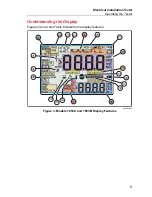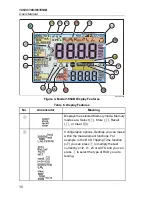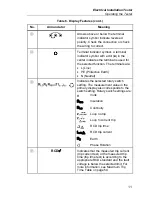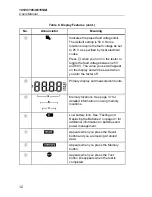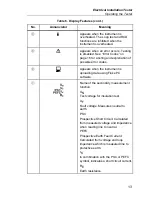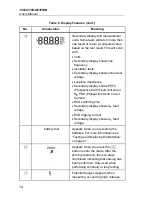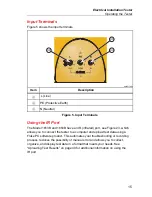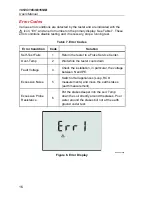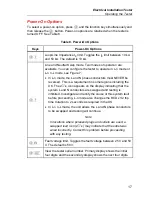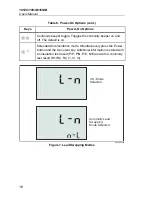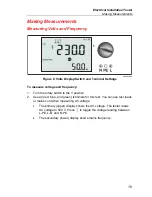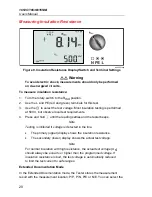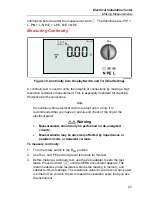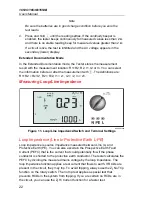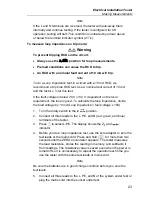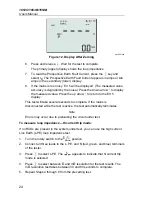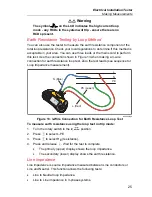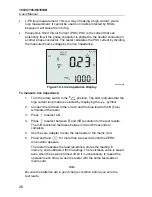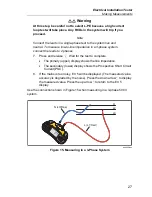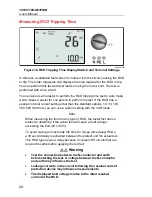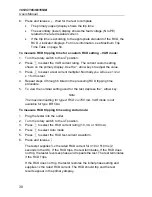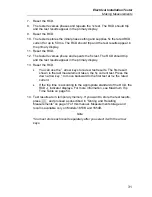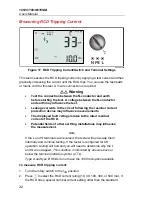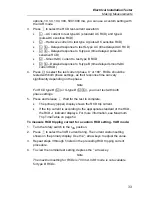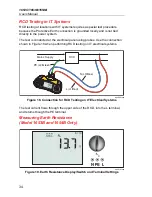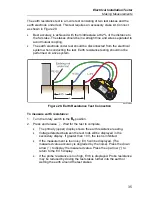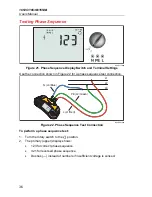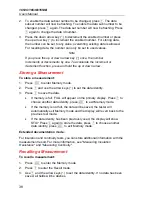
Electrical
Installation
Tester
Making
Measurements
23
Note
If the L and N terminals are reversed, the tester will auto-swap them
internally and continue testing. If the tester is configured for UK
operation, testing will halt. This condition is indicated by arrows above
or below the terminal indicator symbol
(
)
.
To measure loop impedance no trip mode:
Warning
To prevent tripping RCDs in the circuit:
•
Always use the
position for loop measurements.
•
Preload conditions can cause the RCD to trip.
•
An RCD with a nominal fault current of 10 mA will trip.
Note
To do a Loop impedance test in a circuit with a 10 mA RCD, we
recommend a trip time RCD test. Use a nominal test current of 10 mA
and the factor x ½ for this test.
If the fault voltage is below 25 V or 50 V, dependent on the local
requirement, the loop is good. To calculate the loop impedance, divide
the fault voltage by 10 mA (Loop impedance = fault voltage x 100).
1. Turn the rotary switch to the
position.
2. Connect all three leads to the L, PE, and N (red, green, and blue)
terminals of the tester.
3. Press
to select L-PE. The display shows the ZL and
indicator.
4. Before you do a loop impedance test, use the zero adapter to zero the
test leads or the mains cord. Press and hold
for more than two
seconds until the ZERO annunciator appears. The tester measures
the lead resistance, stores the reading in memory, and subtracts it
from readings. The resistance value is saved even when the power is
turned off so it is unnecessary to repeat the operation each time you
use the tester with the same test leads or mains cord.
Note
Be sure the batteries are in good charge condition before you zero the
test leads.
5. Connect all three leads to the L, PE, and N of the system under test or
plug the mains cord into the socket under test.

